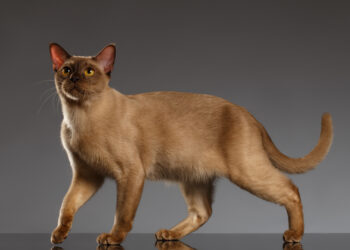For many people, the joy of owning a cat is overshadowed by the struggle with allergies. Sneezing, itchy eyes, and a runny nose can make living with a furry friend difficult. Fortunately, hypoallergenic small cat breeds offer a solution for those who suffer from cat allergies but still want the companionship of a feline friend. This comprehensive guide explores what will be the hypoallergenic small cat breeds, providing insights into their characteristics, care, and the best options for allergy sufferers.
What Will Be the Hypoallergenic Small Cat Breeds?
Understanding what will be the hypoallergenic small cat breeds involves recognizing the unique traits that reduce the allergens typically associated with cats. These breeds are not completely allergen-free, but they produce fewer allergens than others, making them more suitable for people with allergies.
Characteristics of Hypoallergenic Cats
Low-Shedding Coats
One of the primary features of hypoallergenic cats is their low-shedding coats. Less shedding means fewer allergens are released into the environment, making it easier for allergy sufferers to manage their symptoms.
Low Dander Production
Dander, the tiny flakes of skin shed by animals, is a common allergen. Hypoallergenic cats tend to produce less dander, which significantly reduces the allergen load in the home.
Protein Levels in Saliva
The protein Fel d 1, found in cat saliva, is a major allergen. Hypoallergenic cats typically have lower levels of this protein, which means when they groom themselves, they spread fewer allergens.
Popular Hypoallergenic Small Cat Breeds
Sphynx
History and Origin
The Sphynx cat, known for its lack of fur, originated in Canada in the 1960s. This breed was developed through selective breeding of hairless cats found in natural populations.
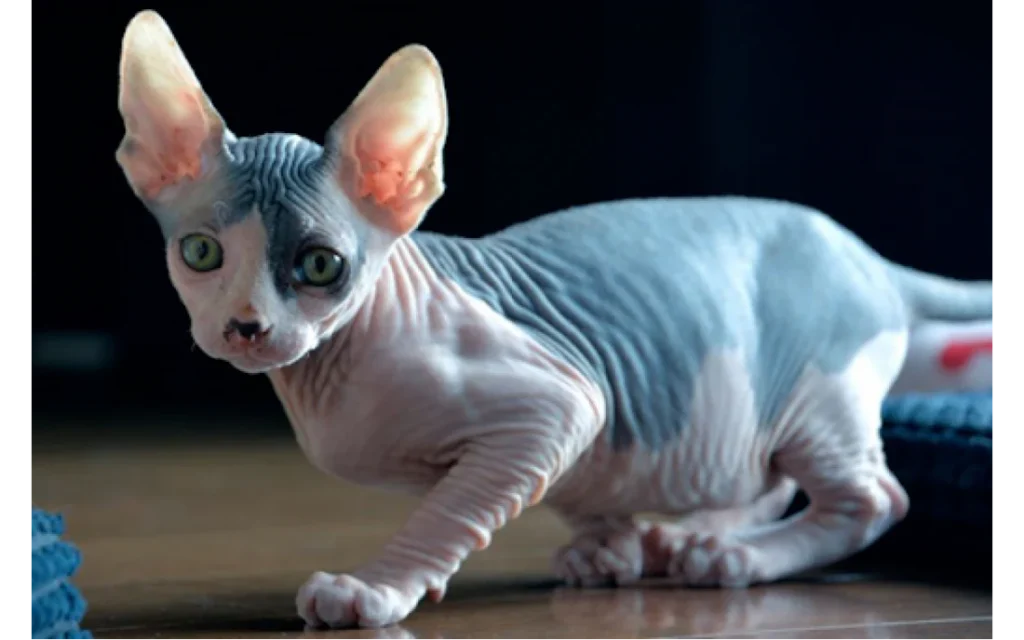
Physical Characteristics
Sphynx cats are medium-sized with a muscular build and a characteristic wrinkled skin. They are nearly hairless, with a fine peach-fuzz texture.
Personality Traits
Sphynx cats are known for their affectionate and playful nature. They are highly social and enjoy interacting with their human companions.
Care and Maintenance
Despite being hairless, Sphynx cats require regular bathing to remove oils from their skin. They also need protection from extreme temperatures due to their lack of fur.
Russian Blue
History and Origin
The Russian Blue is a naturally occurring breed that has been around for centuries, with origins traced back to the port of Arkhangelsk, Russia.
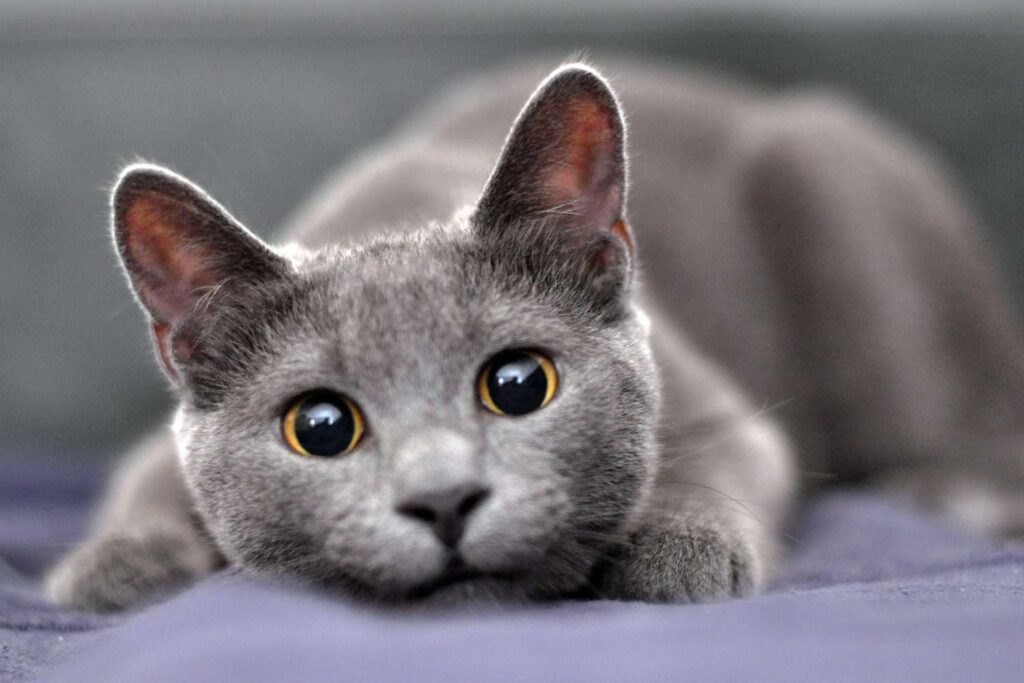
Physical Characteristics
This breed is known for its short, dense blue-grey coat and striking green eyes. The fur is thick and plush, resembling a seal’s coat.
Personality Traits
Russian Blues are gentle, intelligent, and reserved. They form strong bonds with their owners but can be shy around strangers.
Care and Maintenance
Their dense coat requires regular grooming to keep it in good condition, and they benefit from a stable, routine-based environment.
Cornish Rex
History and Origin
The Cornish Rex, originating from Cornwall, England, was discovered in the 1950s. It is known for its unique curly coat, resulting from a natural genetic mutation.
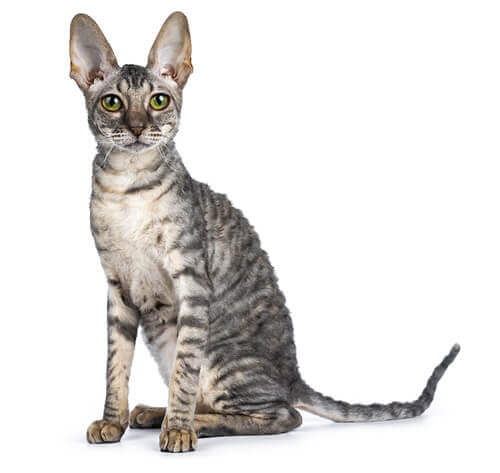
Physical Characteristics
Cornish Rex cats have a slender, athletic build with short, wavy fur. They are elegant and agile, often described as having a “whippet-like” appearance.
Personality Traits
These cats are active, playful, and affectionate. They are known for their kitten-like behavior well into adulthood.
Care and Maintenance
Their curly coat is easy to care for, requiring minimal grooming. However, they are sensitive to cold and may need extra warmth in cooler climates.
Devon Rex
History and Origin
The Devon Rex emerged in Devon, England, in the 1960s. This breed also has a curly coat, but its origin is different from the Cornish Rex.
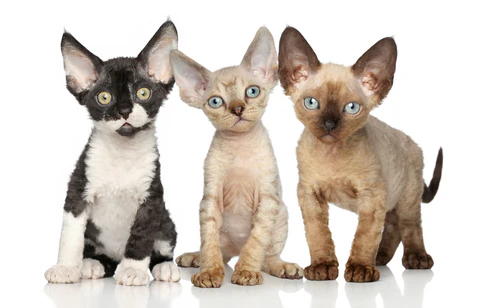
Physical Characteristics
Devon Rex cats are medium-sized with a pixie-like face and large ears. Their fur is soft and curly, with a unique texture.
Personality Traits
Devon Rex cats are friendly, mischievous, and highly social. They thrive on human interaction and enjoy being the center of attention.
Care and Maintenance
Their coat requires occasional grooming, and they need a balanced diet to maintain their health and energy levels.
Balinese
History and Origin
The Balinese breed, a long-haired variety of the Siamese, was developed in the United States in the mid-20th century.
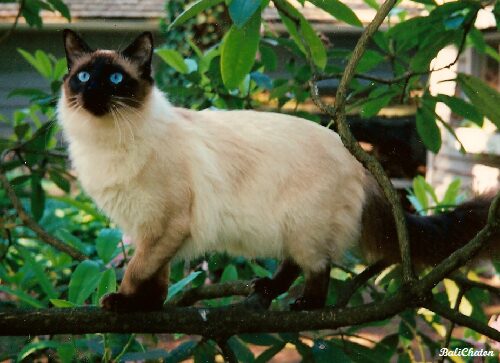
Physical Characteristics
Balinese cats have a graceful, slender body with silky, medium-length fur. They have striking blue eyes and a fine bone structure.
Personality Traits
Known for their vocal and social nature, Balinese cats are affectionate and enjoy being around people. They are intelligent and easy to train.
Care and Maintenance
Their long fur requires regular grooming to prevent matting. They also need mental stimulation and interactive play to stay happy.
Oriental Shorthair
History and Origin
Developed in the United States, the Oriental Shorthair is a breed that comes in a wide variety of colors and patterns.
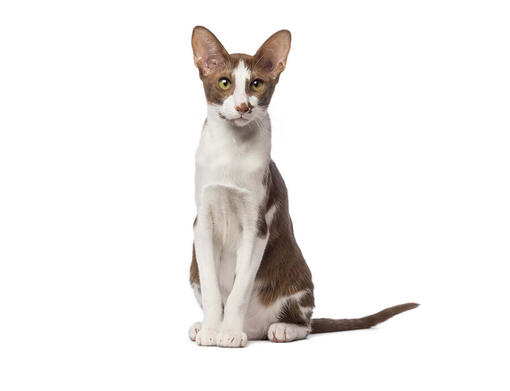
Physical Characteristics
Oriental Shorthairs have a sleek, slender body with short, fine fur. They share the same body structure as the Siamese.
Personality Traits
These cats are active, curious, and talkative. They form strong bonds with their families and enjoy interactive play.
Care and Maintenance
Their short coat is low-maintenance, requiring minimal grooming. They benefit from a stimulating environment to keep them engaged.
How to Choose the Right Hypoallergenic Cat
Consider Your Allergies
Assess the severity of your allergies and choose a breed that is known to produce fewer allergens. Spending time with different breeds before making a decision can also help.
Space and Lifestyle
Consider your living space and lifestyle when choosing a hypoallergenic cat. Some breeds are more active and require more space and stimulation.
Long-Term Commitment
Owning a cat is a long-term commitment. Ensure you are prepared for the responsibilities of cat ownership, including regular vet visits and proper care.
Living with Hypoallergenic Cats
Creating a Safe Environment
Create a safe and comfortable environment for your cat. Provide plenty of toys, scratching posts, and safe spaces where they can retreat.
Regular Grooming and Cleaning
Regular grooming and cleaning can help reduce allergens. Brush your cat frequently and keep your home clean to minimize dander.
Diet and Health Considerations
Ensure your cat is on a balanced diet that meets their nutritional needs. Regular check-ups with the vet can help prevent health issues.
Managing Allergies
Tips for Reducing Allergens
Regularly clean your home, wash your cat’s bedding, and use allergen-reducing sprays. Keeping your cat out of certain rooms, like the bedroom, can also help.
Air Purifiers and Cleaning Routines
Invest in a good air purifier to reduce airborne allergens. Establish a cleaning routine that includes vacuuming with a HEPA filter and dusting regularly.
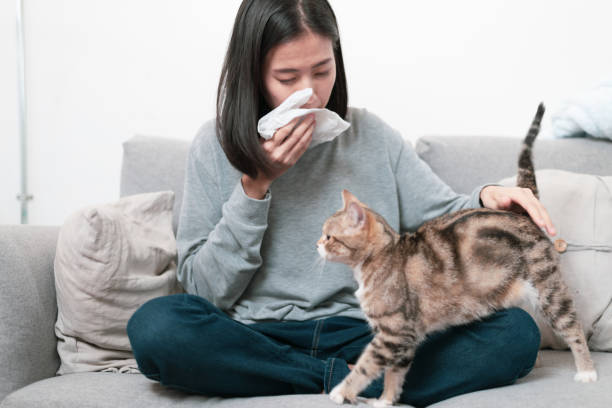
Allergy Medications
Consult with a healthcare provider about allergy medications that can help manage your symptoms. Over-the-counter antihistamines can be effective for many people.
Common Misconceptions
Hypoallergenic Means No Allergies
Hypoallergenic cats still produce some allergens. They are less likely to trigger allergies, but it’s important to manage expectations.
All Hypoallergenic Cats Are the Same
Different hypoallergenic breeds produce varying levels of allergens. It’s important to research and choose the breed that’s best suited to your needs.
Only Hairless Cats Are Hypoallergenic
While hairless breeds like the Sphynx are often hypoallergenic, there are several furred breeds that are also suitable for allergy sufferers.
Breeding and Genetics
Genetic Traits of Hypoallergenic Cats
Hypoallergenic traits can be inherited. Understanding the genetics behind these traits can help in breeding programs aimed at producing hypoallergenic cats.
Ethical Breeding Practices
Ethical breeding practices are essential to ensure the health and well-being of hypoallergenic cats. Choose breeders who prioritize the welfare of their animals.
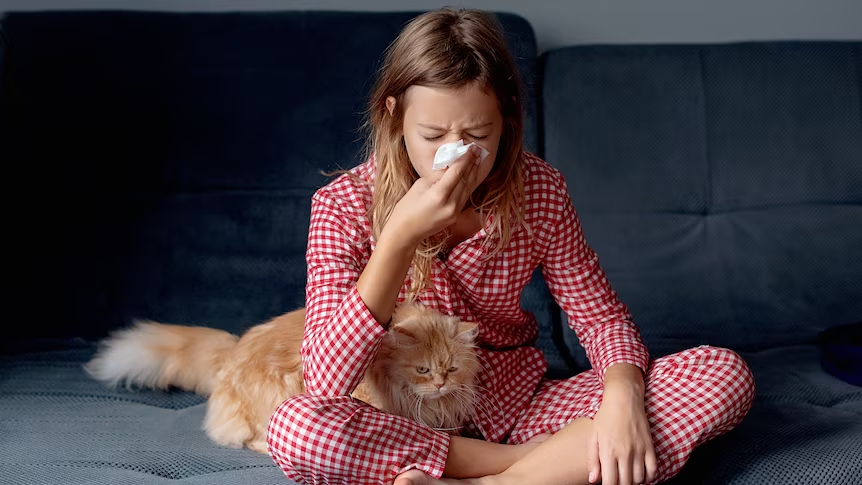
Future of Hypoallergenic Cat Breeding
Advancements in genetics may lead to the development of more hypoallergenic breeds. Research is ongoing to better understand how to reduce allergens in cats.
Health Considerations
Common Health Issues
Like all cats, hypoallergenic breeds can be prone to certain health issues. Regular vet check-ups and preventive care are essential.
Preventative Care
Vaccinations, parasite control, and routine health screenings are important to keep your hypoallergenic cat healthy.
Vet Check-Ups and Vaccinations
Schedule regular vet visits to monitor your cat’s health and keep up with vaccinations and other necessary treatments.
Diet and Nutrition
Best Diets for Hypoallergenic Cats
High-quality, balanced diets are crucial for hypoallergenic cats. Consult your vet to choose the best food for your cat’s specific needs.
Importance of Protein and Nutrients
Ensure your cat’s diet is rich in protein and essential nutrients to support their overall health and immune system.
Common Food Allergies
Be aware of common food allergies in cats, and choose hypoallergenic food options if necessary. Monitor your cat for any signs of dietary sensitivities.
Grooming Tips
Regular Brushing
Regular brushing helps to remove loose fur and reduce allergens. Use a brush suitable for your cat’s coat type.
Bathing and Hygiene
Some hypoallergenic breeds benefit from regular baths to reduce skin oils and allergens. Consult your vet for the best bathing routine.

Nail Trimming and Ear Cleaning
Keep your cat’s nails trimmed and their ears clean to prevent infections. Regular grooming sessions can also be a bonding time.
Behavior and Training
Understanding Cat Behavior
Learn to recognize and understand your cat’s behavior. This can help in addressing any issues and strengthening your bond.
Litter Training
Litter training is essential for a clean and odor-free home. Start training early and be consistent with litter box maintenance.
Socialization
Socialize your cat from a young age to ensure they are comfortable around people and other pets. Positive interactions help in developing a well-adjusted pet.
Creating a Cat-Friendly Home
Safe Spaces
Provide your cat with safe spaces where they can retreat and feel secure. This is important for their mental well-being.
Toys and Entertainment
Keep your cat entertained with a variety of toys. Interactive play helps in keeping them physically and mentally stimulated.
Cat-Proofing Your Home
Make sure your home is safe for your cat. Remove any hazards and ensure they have safe access to food, water, and litter boxes.
Traveling with Hypoallergenic Cats
Preparing for Travel
Plan ahead for traveling with your cat. Ensure they are comfortable in a carrier and prepare for any contingencies.
Carriers and Safety
Choose a sturdy carrier that provides enough space and ventilation. Secure it properly in your vehicle to ensure your cat’s safety.
Tips for Reducing Stress
Travel can be stressful for cats. Use calming aids like pheromone sprays and ensure they have familiar items in their carrier.
Adopting Hypoallergenic Cats
Adoption vs. Buying
Consider adopting from a shelter or rescue organization. Many hypoallergenic cats need homes, and adoption can be a rewarding experience.
Finding Reputable Breeders and Shelters
Do your research to find reputable breeders and shelters. Ensure they follow ethical practices and prioritize the health of their animals.
What to Expect During Adoption
The adoption process may include home visits and interviews. Be prepared to provide information about your home and lifestyle.
Cost of Owning a Hypoallergenic Cat
Initial Costs
Initial costs can include adoption fees, vaccinations, and supplies. Budget accordingly to ensure you can cover these expenses.
Ongoing Expenses
Owning a cat involves ongoing costs like food, litter, and vet care. Plan for these expenses to avoid any surprises.
Budgeting Tips
Create a budget for your cat’s expenses. This can help in managing costs and ensuring you provide the best care possible.
Hypoallergenic Cats for Families
Choosing a Cat for Kids
Consider breeds that are known for being good with children. Hypoallergenic cats can be a great addition to a family.
Benefits for Children
Having a cat can teach children responsibility and provide companionship. Hypoallergenic breeds can make this possible even for allergic families.
Family-Friendly Breeds
Some hypoallergenic breeds are particularly good with children. Research these breeds to find the best fit for your family.
Hypoallergenic Cats for Singles
Companionship Benefits
Cats can provide great companionship for singles. They are independent yet affectionate, making them ideal pets.
Best Breeds for Singles
Some breeds are more suited for single owners due to their independent nature. Choose a breed that matches your lifestyle.
Managing Time and Care
Owning a cat involves a time commitment. Ensure you have the time to properly care for and interact with your cat.
Hypoallergenic Cats for Seniors
Health Benefits for Seniors
Cats can offer numerous health benefits for seniors, including companionship and reduced stress.
Low-Maintenance Breeds
Some hypoallergenic breeds are low-maintenance, making them ideal for senior owners.
Tips for Senior Cat Owners
Ensure the cat’s needs are manageable. Consider their activity level and any health concerns that may arise.
Hypoallergenic Cats and Other Pets
Introducing New Cats to Existing Pets
Introduce new cats gradually to existing pets. This helps in preventing conflicts and ensuring a smooth transition.
Managing Multi-Pet Households
Having multiple pets requires careful management. Ensure each pet has their own space and resources.
Creating Harmony
Foster a harmonious environment by providing plenty of enrichment and addressing any behavioral issues promptly.
Resources for Hypoallergenic Cat Owners
Books and Guides
There are many books and guides available for hypoallergenic cat owners. These can provide valuable information and tips.
Online Communities
Join online communities and forums to connect with other hypoallergenic cat owners. Sharing experiences can be helpful.
Veterinary Resources
Consult your vet for resources and advice specific to hypoallergenic cat care. They can provide guidance on health and maintenance.
FAQs
What defines a hypoallergenic cat?
A hypoallergenic cat produces fewer allergens than other cats, primarily due to lower levels of the Fel d 1 protein.
How do I know if a cat is hypoallergenic?
Research and spend time with the cat to see if you have an allergic reaction. Hypoallergenic breeds are generally known for producing fewer allergens.
Can hypoallergenic cats still cause allergies?
Yes, hypoallergenic cats can still cause allergies, but they are less likely to trigger severe reactions.
What are the best hypoallergenic small cat breeds for families?
Breeds like the Balinese, Devon Rex, and Russian Blue are good options for families due to their friendly and affectionate nature.
How often should I groom a hypoallergenic cat?
Grooming frequency depends on the breed, but regular brushing and occasional baths are generally recommended.
Are hypoallergenic cats more expensive?
Hypoallergenic cats can be more expensive due to their specialized breeding and care needs. Costs can vary depending on the breed and source.
Conclusion
Hypoallergenic small cat breeds offer a wonderful opportunity for allergy sufferers to enjoy the companionship of a cat without the constant struggle with allergies. By understanding the characteristics of these breeds and how to care for them, you can find the perfect feline friend to join your family. Whether you’re looking for a playful Sphynx or a gentle Russian Blue, there’s a hypoallergenic breed out there for everyone. With the right care and management, living with a hypoallergenic cat can be a joyful and fulfilling experience.





